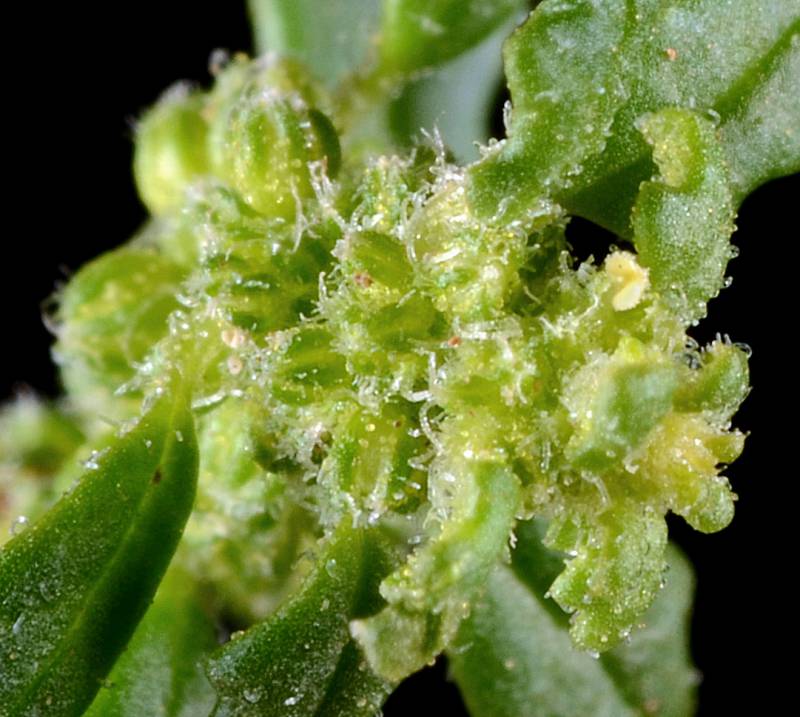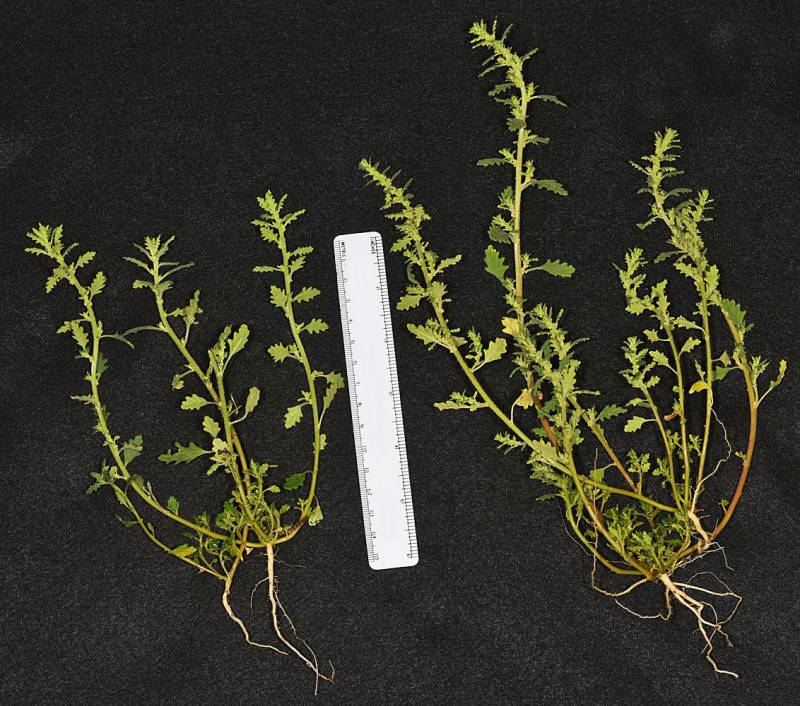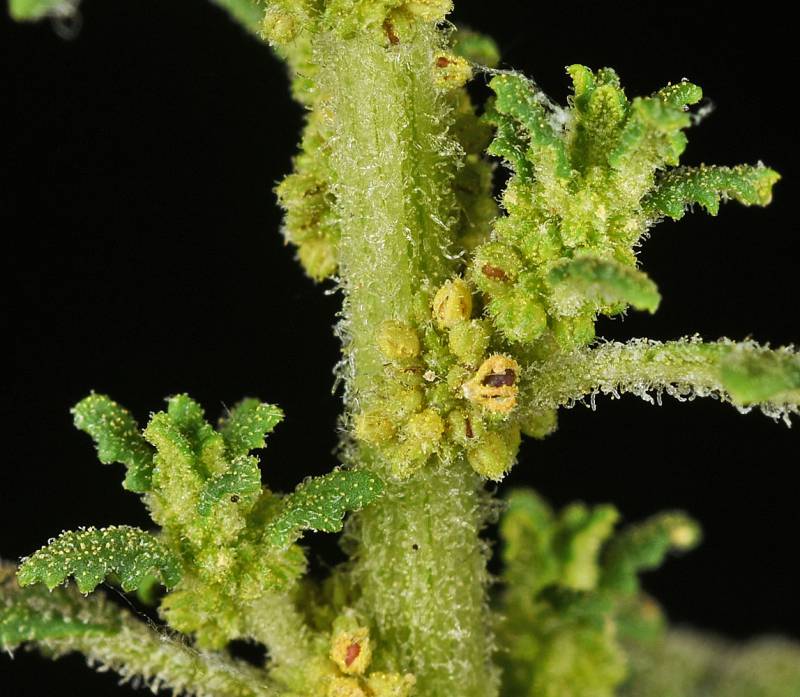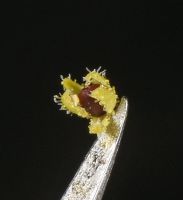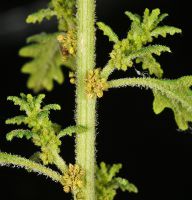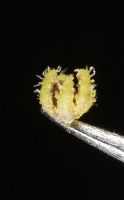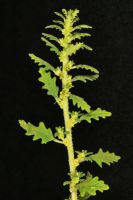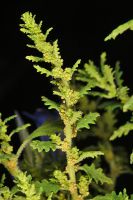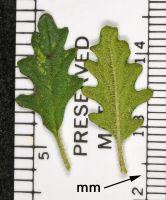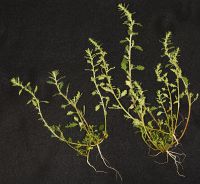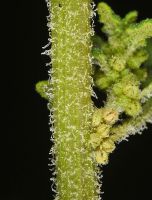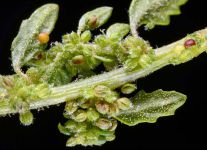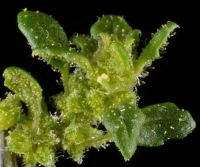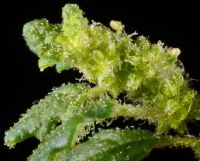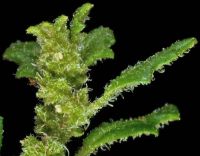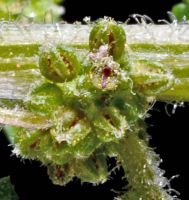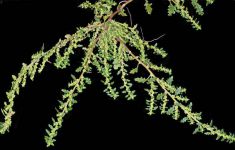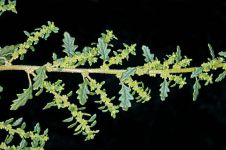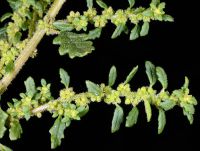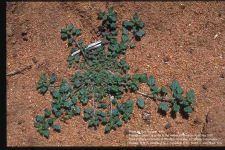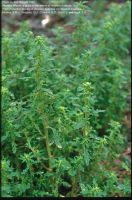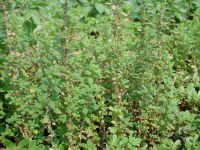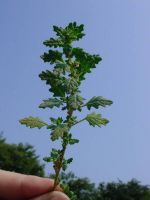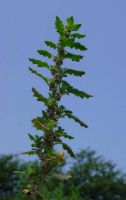Distribution: Occurring on both sides of the Cascades crest chiefly along the southern border of Washington; southern British Columbia to California and northern Nevada, east to Idaho; scattered in eastern half of U.S.
Habitat: Sandy or gravelly soils, streambanks, waste areas, and other disturbed sites.
Flowers: July-September
Origin: Introduced from Australia
Growth Duration: Annual
Conservation Status: Not of concern
Pollination: Wind
Prostrate to sub-erect annual, the stems much-branched to simple, 0.1-4.5 dm. tall, with simple hairs and sessile to stalked glands.
Leaves alternate, malodorous, with petioles 0.3-1.5 cm. long; blades narrowly elliptic to broadly ovate, 0.5-2.7 cm. long and 0.3-1.5 cm. wide, obtuse, the bases wedge-shaped.
Inflorescences of lateral cymes or globose clusters 1.5-2.5 mm. in diameter, subtended by leaf-like bracts 3-4.5 mm. long; perianth segments 5, distinct nearly to the base, the lobes narrowly elliptic to narrowly oblong, 0.6 x 0.2 mm., with stalked glands, becoming white in fruit; stamens 1 or none; stigmas 2.
Achenes ovoid, membranous.
Publication: Ukrayins’k. Bot. Zhurn., n. s. 59: 382. 2002.
Teloxys pumilio (R. Br.) W.A. Weber
PNW Herbaria: Specimen records of Dysphania pumilio in the Consortium of Pacific Northwest Herbaria database
WA Flora Checklist: Dysphania pumilio checklist entry
OregonFlora: Dysphania pumilio information
E-Flora BC: Dysphania pumilio atlas page
CalPhotos: Dysphania pumilio photos

